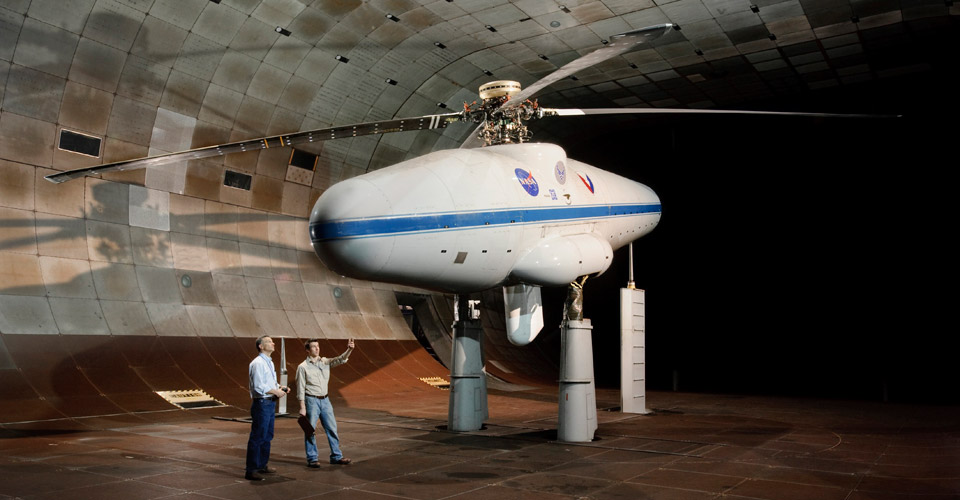UH-60A Individual Blade Control Project

The UH-60A Individual Blade Control (IBC) Project was conceived over ten years ago by NASA, the U.S. Army, Sikorsky Aircraft, and ZF Luftfahrttechnik GmbH (ZFL). In Spring 2009, a completely successful evaluation of the IBC system was completed in the National Full-Scale Aerodynamics Complex (NFAC) operated by the U.S. Air Force, Arnold Engineering Development Center. The flight qualified UH-60A rotor was safely tested beyond 170 knots and at thrust levels greater than 25,000 lbs. The aircraft itself does not fly faster than 160 knots and the thrust level is limited to about 22,000 lbs in flight. These extreme test conditions were used to assess the IBC capability to expand the existing flight envelope of the UH-60A rotor. The results of the test program were reported at the June 2009 American Helicopter Society 65th National Forum in Grapevine, Texas. This was less than two months after completion of the wind tunnel test program and is a new record in test reporting for full-scale helicopter rotor tests.
The wind tunnel test program was a collaborative effort between NASA, U.S. Army, Sikorsky Aircraft, and ZF Luftfahrttechnik GmbH (ZFL) with both a Space Act Agreement (NASA and Sikorsky) and an International Space Act Agreement (NASA and ZFL) implemented. This was the first full test of the Large Rotor Test Apparatus (LRTA) in the 40- by 80-Foot Wind Tunnel. The LRTA powered and controlled the UH-60A rotor. It was the first use of the new $7M Air Force data acquisition system in the NFAC. The test project successfully demonstrated and quantified the substantial benefits of IBC for a UH-60A rotor. All major test objectives were met, allowing for the evaluation of IBC effects on power, noise, vibration, loads, and flight characteristics. For the very first time ever, the power reductions possible using IBC were documented and have now been reported in the open literature. In addition, the ability of the IBC technology to provide in-flight tuning and reconfiguration was demonstrated for the first time. The IBC technology has now been demonstrated to the U.S. rotorcraft community and IBC technology is now being actively pursued by more that one major helicopter manufacturer. This test team has now established the safe testing and operational procedures for future UH-60 rotor testing in the NFAC. This is critically important with the next planned test for the NFAC is the UH-60A Airloads Program rotor with the greatest amount of research instrumentation every installed in a helicopter rotor. The IBC project team has demonstrated the importance and unique research capabilities of full-scale helicopter rotor testing in the 40- by 80-Foot Wind Tunnel using the Large Rotor Test Apparatus.
Point of Contact:
Tom Norman
NASA Ames Research Center
Moffett Field CA 94035-1000